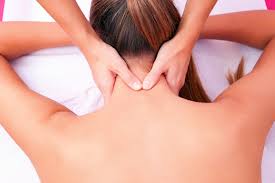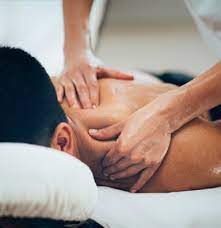

Forward head posture (FHP) is all too common in today’s tech-heavy world, where we spend long hours hunched over screens.
This posture can lead to discomfort, headaches, and long-term spine misalignment.
The good news is that massage therapy offers a holistic approach to correcting forward head posture by targeting muscles, improving mobility, and re-educating the body on proper alignment.
In this article, we will dive into how massage therapy works to fix FHP and why it is an effective tool for long-term posture correction.
Article Contents:
- Understanding Forward Head Posture
- The Role of Massage Therapy in Postural Correction
- Techniques Used in Massage Therapy for FHP
- Real-Life Success Stories: How Massage Therapy Has Helped Others
- The Long-Term Benefits of Massage for Posture
- Conclusion: Maintaining Posture Health with Massage
Understanding Forward Head Posture
Forward head posture occurs when the head is positioned in front of the shoulders rather than aligned vertically.
This misalignment puts strain on the cervical spine and surrounding muscles, leading to tension, pain, and sometimes even nerve compression.
Common causes include prolonged screen time, poor ergonomic setups, and stress, all of which encourage the head and shoulders to tilt forward.
The Role of Massage Therapy in Postural Correction
Massage therapy plays a crucial role in correcting forward head posture by targeting the muscles and soft tissues that contribute to this misalignment.
Unlike other forms of treatment that may focus on quick fixes, massage works to address the root causes of FHP by loosening tight muscles, releasing trigger points, and promoting better circulation.
This holistic approach allows for a gradual but effective answer to the burning query “is forward head posture correctable?”.
According to the Peterborough Massage Therapy Clinic, massage not only addresses muscle stiffness but also improves blood flow, which is essential for healing and muscle function.
By releasing tension in the neck, shoulders, and upper back, massage therapy helps bring the head back into its natural position over time.
Techniques Used in Massage Therapy for FHP
Massage therapists use several techniques to correct forward head posture, each tailored to the individual’s specific needs.
Here are some of the most effective methods:
Deep Tissue Massage for Posture: This technique targets deeper muscle layers, specifically the tight muscles around the neck and upper back that often cause or exacerbate FHP. By applying firm pressure, the therapist helps to break up knots and relieve chronic tension (Woodward Chiropractic & Massage).
Myofascial Release: This technique focuses on the fascia, the connective tissue that surrounds muscles. Tight or restricted fascia can pull the head forward, so releasing these tissues via myofascial release can significantly improve alignment. Studies have shown that myofascial release helps increase flexibility and reduce pain, making it a go-to method for addressing postural issues.
Trigger Point Therapy: Often, people with forward head posture have tight spots or “knots” in their muscles, particularly in the upper trapezius and neck muscles. Trigger point therapy targets these areas to release the tension, allowing for a more balanced head position.
Craniosacral Therapy: This gentle approach focuses on manipulating the bones of the skull and the spine to relieve pressure and improve alignment. It is particularly effective for those who experience headaches and neck pain as a result of their posture.
Postural Massage Techniques: Techniques such as assisted stretching and mobilization work to increase range of motion and strengthen the muscles needed for maintaining good posture. Therapists often combine these methods with ergonomic advice, ensuring patients know how to maintain improvements at home and at work.
Real-Life Success Stories: How Massage Therapy Has Helped Others
Let’s talk about Nina, a 38-year-old accountant who spent hours in front of her computer.
Over time, she developed forward head posture, leading to frequent neck pain and tension headaches. After her chiropractor recommended massage therapy, Sarah began regular sessions that included deep tissue massage, myofascial release, and targeted neck stretches.
Within weeks, she noticed a reduction in pain, and over a few months, her posture significantly improved.
Another case is David, a 45-year-old office worker who, like many, developed a “tech neck” from using his smartphone and laptop for extended periods.
His massage therapist focused on releasing his tight upper back muscles and teaching him posture correction techniques.
With consistent sessions and exercises, David was able to regain his natural cervical curvature, improving his comfort and mobility.
The Long-Term Benefits of Massage for Posture
Massage therapy offers numerous long-term benefits for those looking to correct their posture:
Improved Muscle Flexibility: Regular massage sessions help maintain muscle elasticity, allowing for better movement and alignment. A flexible neck and upper back make it easier for the head to stay aligned over the shoulders.
Pain Reduction: By addressing muscle tension and trigger points, massage therapy can significantly reduce chronic pain associated with forward head posture. This reduction in pain allows patients to move more freely, further supporting their efforts to correct posture.
Enhanced Postural Awareness: Massage therapy does not just treat symptoms; it educates patients about their bodies. Therapists provide valuable insight into postural habits and offer techniques, such as ergonomic adjustments, that help patients maintain good posture outside the clinic.
Maintaining Posture Health with Massage
While forward head posture can be a stubborn issue, massage therapy provides a comprehensive and effective approach to correction.
By targeting the muscles and tissues responsible for misalignment, massage helps realign the head and neck over time.
To maintain these improvements, it is important to integrate ergonomic adjustments, such as raising screen levels and taking regular breaks, along with consistent massage therapy.
So, if you are struggling with forward head posture, consider booking a session with a qualified massage therapist.
A combination of deep tissue massage techniques, stretching, and posture education could be the key to reducing pain and reclaiming your natural alignment.
References:


